"A victim amongst all those others, but not officially recognised as 'Mort Pour la France'."
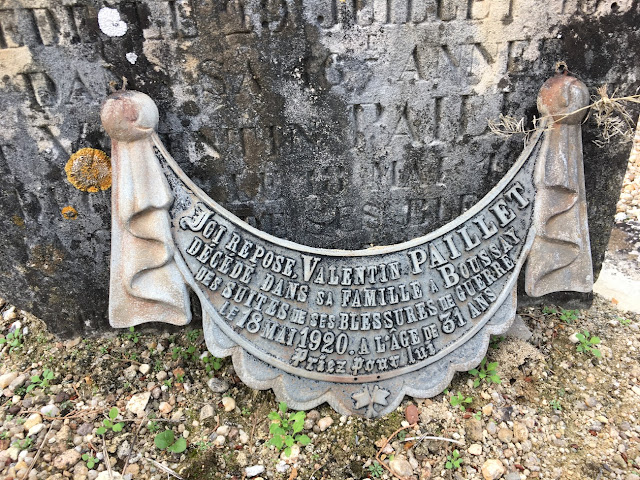 |
| Plaque on the grave of Valentin Paillet in the cemetery of Boussay, mentioning "died in his family from his war wounds" at the age of 31 years. |
This is a guest post, written by Fabrice Doucet, who is an amateur local historian with a particular interest in the First World War and Preuilly. With his permission, and some AI help, I've translated a post he wrote for Armistice Day last year on a Facebook group that we both belong to, and used his photos.
On this November 11, 2022, let us recall the tragic destiny of a soldier from Boussay during the First World War. Valentin PAILLET, born on September 1, 1888 in Martizay, is the son of Silvain Paillet (farmer) and Virginie (Rose) Vignault. He was mobilized in the 90th Infantry Regiment of Châteauroux and joined his posting on August 3, 1914. He was wounded for the first time by a piece of shrapnel on April 25, 1916 at "Hill 304" near Verdun. After his convalescence, he was posted in July 1916 to the 54th Infantry Regiment, originally based in Compiègne.
He was evacuated from the front seriously wounded during the battle of the Somme, on September 25, 1916 at Bouchavesnes, because of a "wound in the right temporal region caused by shrapnel". He was awarded the Military Medal and the Croix de Guerre in October 1916. It tells us a little more about the circumstances: "very brave soldier telephonist, absolutely dedicated. Repeatedly volunteered to go and repair the lines under violent shelling. He was seriously wounded during one of his dangerous missions". He was then hospitalised in Bordeaux where surgeons specialising in complex operations on the faces of the "gueules cassées" were stationed. The disfigured faces of these thousands of soldiers will be one of the symbols of the horror of this war. Valentin Paillet went before the special discharge commission of Bordeaux on April 7, 1917 for "complete loss of bone substance in the right parieto-temporal region and left hemiplegia". Discharged category n°1 with a bonus, he was "struck off the rolls" and sent back to his home in Boussay on November 30, 1917, 14 months after his injury.
He stayed in Boussay with his parents in the hamlet of Roux and died of his war wounds on May 18, 1920. In spite of his eloquent military citation, he was not recognized as "Mort pour la France", the deadline for recognition being October 24, 1919. In spite of this, the municipality of Boussay decided at the time to inscribe his name on the Monument aux Morts located in the cemetery. Steps taken jointly in recent years with his great niece Jacqueline Paillet have not allowed the official attribution of the mention "Mort pour la France", for lack of being able to demonstrate by a document of the time the cause of death... However, the soldier's career, the plaque on his grave and the family memory leave no room for doubt.
NB : his brother-in-law Martial Hélias (husband of Marie Louise Paillet) was a cabinetmaker in Preuilly.
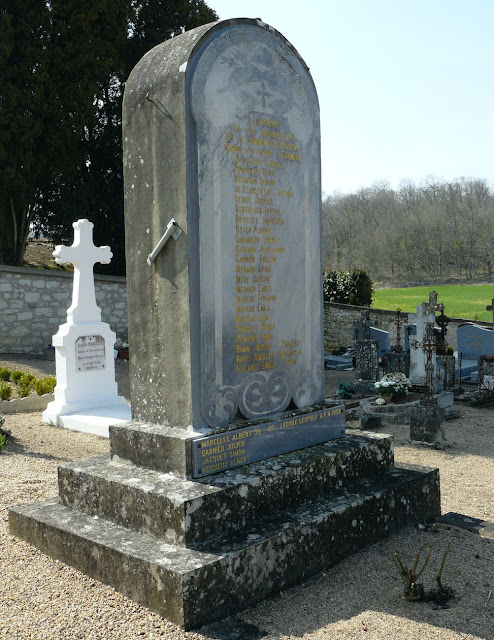 |
| War memorial in the cemetery of Boussay (37) where the name of Valentin Paillet is inscribed with the date "1920". |
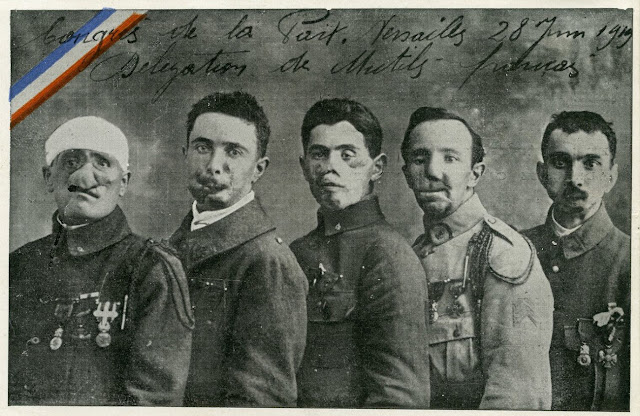 |
Postcard of soldiers of 14-18 wounded in the face, called the "broken heads" (Versailles June 28, 1919). The writing on the card says "Congress of Peace, Versailles, 28 June 1919, Delegation of the Mutilated -- French."
|
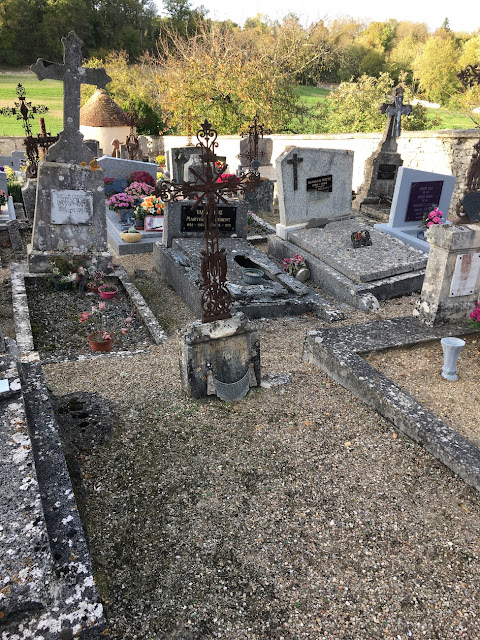 |
| Grave of Valentin Paillet in the cemetery of Boussay. |
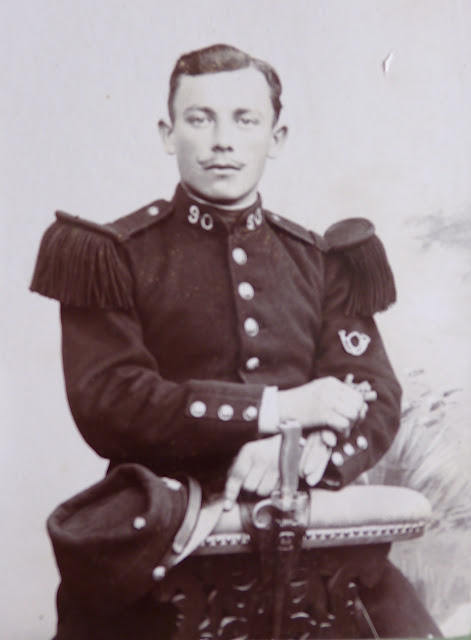 |
| Portrait of Valentin PAILLET soldier in the 90th IR of Châteauroux (family archives). |






2 comments:
In my book, that man IS Mort pour la France.
chm: I think everyone here would agree.
Post a Comment